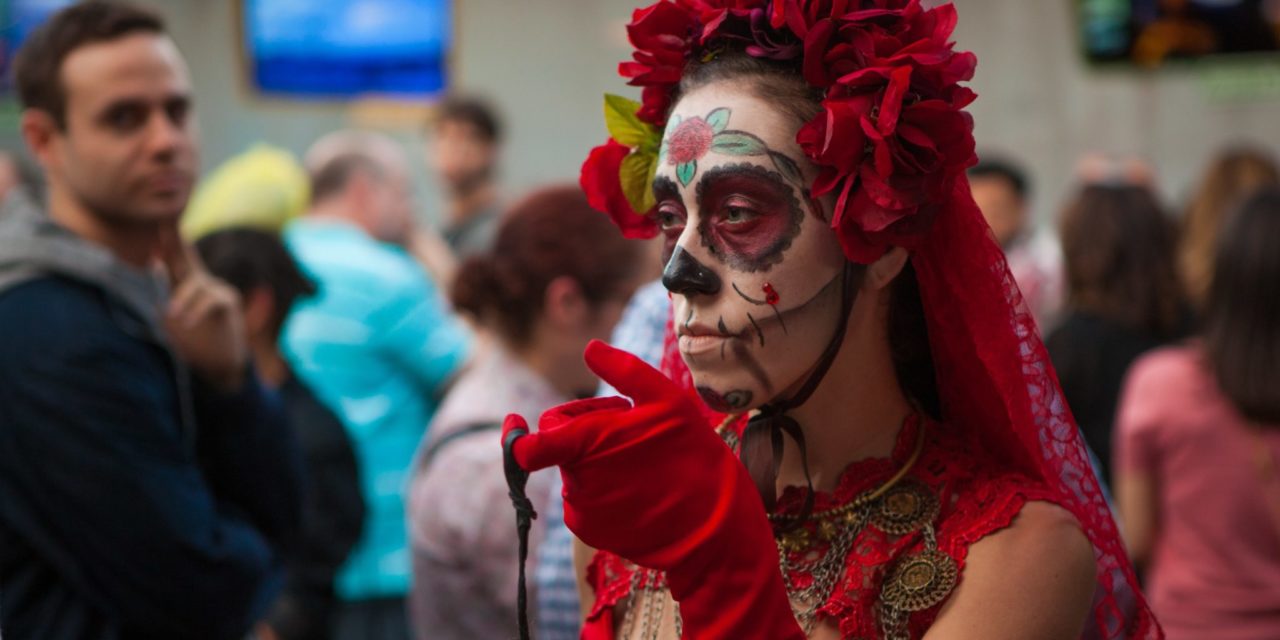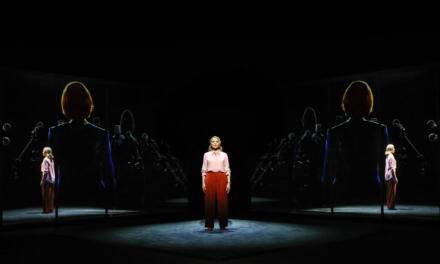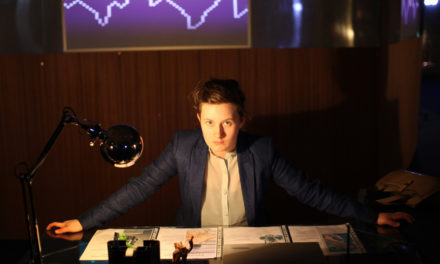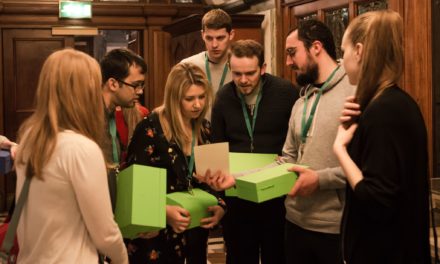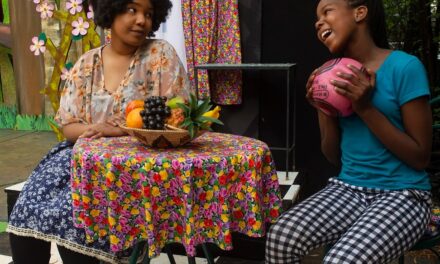Imagine getting in a car without knowing the destination. Sharing the car are singers, actors, and instrumentalists who draw you into a story. The car stops at an incredible site, where another chapter of the story commences – until another car pulls up, with different artists, depicting another chapter of the story. And so on, and so on, in a 90-minute journey throughout the unsuspecting city.
Wait, I’m in the car WITH the musicians and singers?
Yes! Isn’t that exciting? You will interact with them simply by sharing a small space. However, please be considerate to each artist and let them perform for you! In some cars, you will be involved in a participatory action — but we don’t want to spoil the surprise by telling you which ones!
Aside from engaging Genesis-like with the Almighty Source of Life Him/Her/It-self, it can be argued that a “performance” most often requires artists (including crew) and audience converging at a time and place. The Industry’s Yuval Sharon and his collaborators had a more crystalline plan in mind when conceiving of the opera Hopscotch in and for Los Angeles.
An almost holographic retelling of the classic Orpheus/Eurydice with the genders reversed, the opera Hopscotch (2015), conceived and directed by Yuval Sharon, required little slight of virtual hand and enormous strategic planning to deliver story to the audiences and audiences to the story.
While much already has been written in the media with great acclaim about the site-specific work from acclaimed director Yuval Sharon, this report coincides with the advent of its latest incarnation, the issuance (January 13, 2017, The Industry Records) of the audio recording of its music/lyrics and an accompanying 50 libretto booklet with not only background information about the production but also a suggested listening itineraries that extend the unique purposely faceted experiences of a relative few number of live audience members who were engaged en route.
The original production original called by New Yorker’s Alex Ross, “one of the more complicated operatic enterprises to have been attempted since Richard Wagner stated the Ring of the Nibelung, over four days in 1876.” Perhaps a bit of background is useful here to herald more properly the excitement about the audio recording, itself a unique work of opera.
Hopscotch takes its name from a 1963 novel by Argentine writer Julio Cortázar who structured the text so that its chapters can be read in several different sequences. Instead of a table of contents, the book begins with a table of instructions. The overarching but purposely shuffled narrative of the opera constructs a love affair between an artist named Lucha and a rebellious scientist named Jameson as a “disappearance across time.” Its audiences likewise received instructions about how, when, where, etc. to engage in the production.
The opera is composed of 36 “chapters” – including 10 animations short works that — were intentionally presented out of order and were staged at iconic “secret sites” scattered throughout Los Angeles on rooftops, in parks and plazas and along the LA River and inside 24 limousines. Audience members (maximum of 4/car) were joined by one or two performers in each vehicle. Each auto made 8 distinct stops (one of the piece’s 24 live chapters) scheduled along one of 3 different itineraries in the course of 90 minutes.
Each audience quartet experienced at least one piece by each of the six composers/librettists; none experienced all of them in a single itinerary. Each moment in the characters’ lives was shaped by a different composer and writer, performed by a different ensemble, and responding to a specific street or site. The jump from one moment to the other, with the accompanying mystery and disorientation, was one of the central narrative strategies of the work.
The 10 animated “chapters” were issued online two per week prior to the live performances and complete the narrative world of Hopscotch. Taken together, they form a cohesive unit that both informed those experiencing the performances live and those of us who did not have the good fortune to go for the “ride”.
The 24 live chapters reached conclusion(s) by converging at The Hub built on the campus of Sci Arc in the Arts District of Downtown LA. The intimate performances inside the cars had been streaming live to up to 180 additional audience members assembled admission-free at The Hub at any one time; they audited activities were projected on 24 video screens through headsets. The Central Hub was also the site of the spectacular Finale, occurring late afternoon at the end of each performance day. In addition (!) social media posting were encouraged throughout the performances by audiences in the cars and those auditing at The Hub. The sold-out performances were presented weekends from October 31 – November 22, three times daily.
This massive mobile undertaking engaged six composers, six librettists, 126 performers, and a team of assistant stage managers, designers, technicians, and drivers under the direction of The Industry’s founder Yuval Sharon to develop and produce Hopscotch. A cadre of additional international artists, composers, editors, writers and production teams worked on the animations. Hopscotch came two years after The Industry’s critically lauded immersive opera Invisible Cities, a modern take on Italo Calvino’s 1972 eponymous Italian novel that unfolded amid the hustle of Downtown LA’s historic Union Station.
If by now you have run out of fingers trying to figure out how many, when, what … I recommend the new audio recording that comes as a flash drive in the shape of a car key. Sharon and The Industry Executive Director Elizabeth Cline distilled the full production’s 4 hours of music into 20 tracks for a 2 hours/14 minutes duration. They include vocal scenes by each of the opera’s six main composers, spoken work episodes, and instrumental interludes. The “liner notes” lists 7 playlist suggestions, grouping the tracks by the routes, by a composer, by librettist, “just the Story” and “Just the Music”. It also includes:
–Drive: an essay by L.A. Times’ Book Critic David Ulin
–The Journey From A to B: an essay by Elizabeth Cline, The Industry’s Executive Director
–Composing Hopscotch: an essay by Marc Lowenstein, The Industry’s Music Director
-The full story: excerpts and synopses from every chapter in the opera
-Cool facts about L.A & Hopscotch’s secret locations
-An in-depth, behind the scenes Interview with The Industry’s Founder & Artistic Director Yuval Sharon and Hopscotch Dramaturg Josh Raab
– Extensive credits for the live, production animations and the audio version
Sharon notes the recording offers something distance from the live performance, “A sense of the total picture and a chance to appreciate the individual contributions from six of LA’s best composers. … Although the ‘beginning-middle-end’ dramaturgy was never part of the original intention of the work, we hope this record fills in the missing pieces and showcases the diversity of the viewpoint at the center of what Hopscotch represents.”
To mark the occasion, a release event “Hopscotch in Concert” – the first live concert of songs from the opera — will take place Friday, January 20 at the University of Southern California. The performance (7:30 pm, Newman Recital Hall) will be preceded by a panel discussion (4:00 pm) with Sharon and members of the opera’s creative team, plus journalists Mark Swed and Sasha Anawalt. (Open to the public. Free Admission)
KCET, public television for Southern California, produced a 90-minute exposition of the chapters edited “in order” that captures the experience in cars and at The Hub of audiences. An interview with Yuval Sharon may be viewed online:
The Industry creates experimental productions that expand the traditional definition of opera. By merging media through interdisciplinary collaborations, we produce works that attract and inspire new audiences for the art form. We believe that opera can be emergent and responsive to new perspectives and voices in contemporary culture.
The Industry has developed large-scale world premiere productions every other year: Crescent City (2012), Invisible Cities (2013), and Hopscotch (2015). We also present smaller-scale yet artistically ambitious programs: First Take, a biennial workshop of new operas-in-progress; Second Take, a full concert commission and workshop from a First Take composer; Highway One, a performance series dedicated to California’s countercultural history; and Lab, a platform for experiments in collaborative processes.
Whether the city became “suspect” following the advent of Hopscotch, it remains to be revealed through future productions from this deeply inventive nonprofit arts collaborative.
This post was written by the author in their personal capacity.The opinions expressed in this article are the author’s own and do not reflect the view of The Theatre Times, their staff or collaborators.
This post was written by Lauren W. Deutsch.
The views expressed here belong to the author and do not necessarily reflect our views and opinions.

